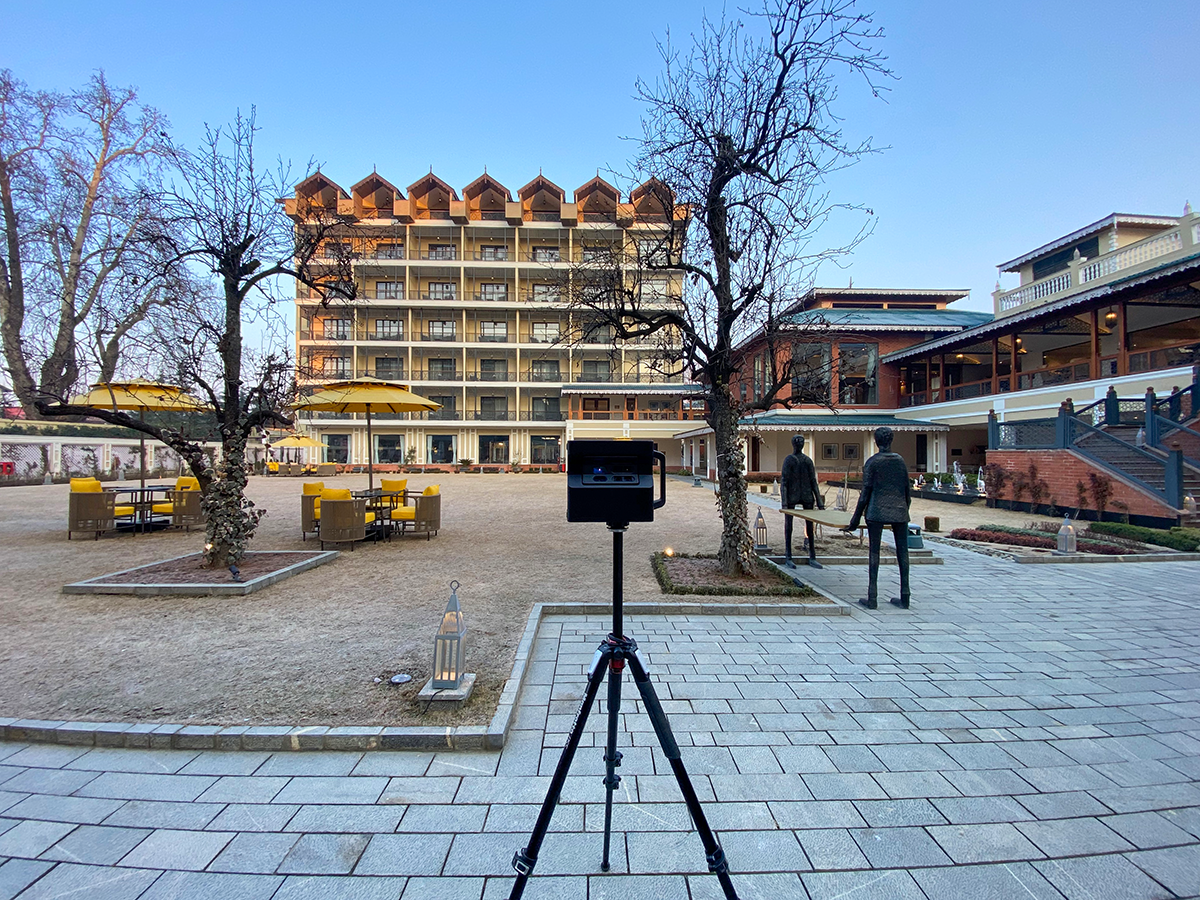The conversation around 3D virtual tours is shifting. What was once seen as a visual marketing tool is now being understood as a source of operational intelligence. A digital twin—a dimensionally accurate, data-rich 3D model of a physical asset—is becoming a foundational layer for modern business. However, adoption rates and strategic applications vary significantly between global markets and India, presenting a distinct opportunity for early adopters.
The Adoption Gap: Global Context vs. The Indian Reality
Globally, the digital twin market is experiencing explosive growth, projected by firms like MarketsandMarkets to exceed USD 110 billion by 2028, driven primarily by the industrial and manufacturing sectors in North America and Europe. An analysis of Google Trends data, as of August 2025, shows that search interest for "digital twin" in markets such as Germany has consistently been four to five times higher than in India over the past 24 months. This data indicates that while the technology is maturing into a core industrial tool globally, its adoption in India remains in a nascent, high-growth phase, with a heavy concentration in commercial real estate.
This analysis examines the current and, more importantly, the emerging strategic applications of this technology across key and niche sectors within the Indian economy.
Core Commercial Applications: From Marketing to Operations
1. Real Estate & PropTech: Mitigating the Trust Deficit
With NRI and domestic Tier-2 city investment in metropolitan real estate growing, the primary barrier for remote buyers is a lack of trust. A digital twin provides an objective, uneditable source of truth. Industry data indicates that properties with 3D tours can sell up to 31% faster. Beyond sales, the asset serves the entire property lifecycle, enabling remote handovers, creating visual inventories for rental agreements, and allowing for seamless collaboration with architects and designers post-purchase.
2. Hospitality: Improving Profitability
For hotels, the strategic objective is to maximize direct, high-margin bookings and reduce reliance on Online Travel Agencies (OTAs), which can charge commissions ranging from 15-30%. A digital twin provides booking confidence that static photos cannot. For the high-value MICE (Meetings, Incentives, Conferences, and Exhibitions) segment, it transforms the sales process into a collaborative planning tool, allowing event managers to map complex layouts remotely and significantly shortening the sales cycle.
3. Warehousing & Supply Chain: Enhancing Efficiency
As a cornerstone of India's "Make in India" initiative, the logistics sector demands operational excellence. A digital twin of a warehouse serves as a powerful tool for logistics managers. It allows for precise logistical planning, slotting optimization, and virtual staff training on safety protocols. For third-party logistics (3PL) providers, sharing a digital twin with a potential client provides a level of transparency that instills confidence and can be a key differentiator in securing large-scale contracts.
Emerging & High-Value Industrial Sectors
4. Insurance & Risk Management: An Undisputed Record
The core value of a digital twin in the insurance sector is its role as an objective, time-stamped record of an asset's condition. For underwriting high-value properties, it provides a detailed visual baseline. In the event of a claim, it serves as an undisputed "before" state, streamlining the claims process and mitigating fraudulent claims. This application shifts the technology from a sales tool to a critical component of risk management.
5. Marine & Aviation: Global Sales and Complex Maintenance
For high-value, mobile assets like yachts, cruise ships, and private jets, a digital twin is the ultimate sales and maintenance tool. A prospective buyer in another hemisphere can conduct a detailed virtual inspection. Post-sale, the model serves as a precise digital blueprint for planning complex retrofits and guiding maintenance crews, ensuring accuracy and reducing time on-site.
6. Museums & Digital Preservation: Archival Integrity
Beyond virtual exhibits for public access, digital twins serve a critical archival purpose. They create a perfect, millimeter-accurate record of an artifact or an entire gallery at a specific point in time. This is invaluable for conservation, academic research, and for creating interactive educational content that can reach a global audience, preserving cultural heritage against physical degradation.
The Strategic Outlook: A Foundational Asset for the Immersive Web
The true long-term value of a digital twin is its role as a foundational asset for the next generation of the internet, often termed the industrial metaverse. The dimensionally accurate 3D models created today are the very spaces that will be experienced in augmented and virtual reality tomorrow. As immersive hardware like the Apple Vision Pro becomes more accessible, businesses that have already created high-fidelity digital twins of their key assets will hold a significant first-mover advantage. They will be prepared to offer immersive e-commerce, virtual training, and remote collaboration, while their competitors are left attempting to catch up.
Conclusion: From Visual Aid to Strategic Imperative
In the Indian context, the adoption of digital twin technology is at an inflection point. The narrative is evolving beyond simple marketing features toward a more sophisticated understanding of the technology as a tool for operational intelligence, risk mitigation, and revenue optimization. Businesses that integrate this technology now are not merely improving their current processes; they are building a strategic and future-proof foundation for the immersive digital economy of tomorrow.
